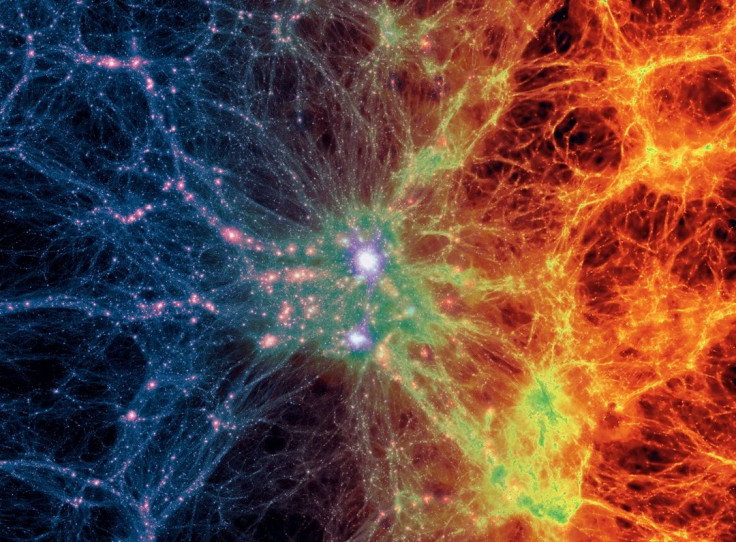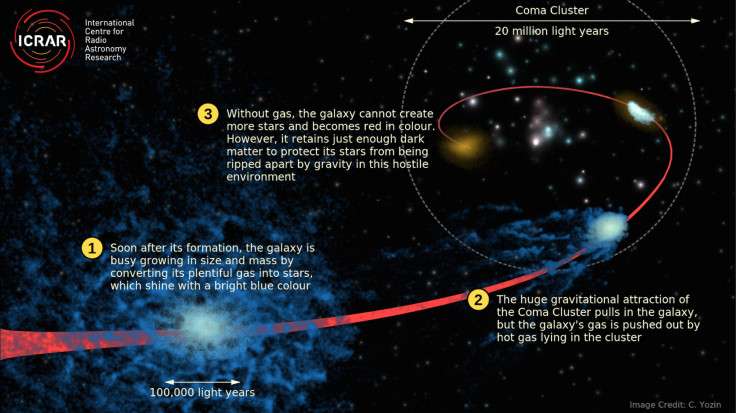Galaxies In Coma Cluster Could Be Packed With 100 Times More Dark Matter Than Visible Matter

Dead galaxies some 300 million light years from Earth, situated in the Coma Cluster, could contain around 100 times more dark matter than visible matter, according to an Australian study published on Sunday.
Based on the observational discovery of the galaxies by a team of researchers at Yale University last year, the research is apparently the first time such an amount of dark matter has been substantiated.
The study was led by Cameron Yozin, a Ph.D. student at the International Centre for Radio Astronomy Research in Crawley, Western Australia, and used computer simulations to study the galaxies within the cluster.
“The galaxies could have fallen into the cluster as early as 7 billion years ago, which, if our current theories of galaxies are correct, suggests they must have lots of dark matter protecting the visible matter from being ripped apart by the cluster,” said a statement by the center.
The Coma Cluster is one of the largest known structures in the universe, with thousands of galaxies being held together by gravity. According to Yozin, the galaxies studied are about the same size each as our own Milky Way but contain only 1 percent of the stars.

Astrophysicists have labeled them “failed” galaxies because they seem to have stopped making new stars when they fell into the cluster, and have been "dead" ever since.
“Galaxies originally form when large clouds of hydrogen gas collapse and are converted to stars. If you remove that gas, the galaxy cannot grow further,” said Yozin, who is based at the University of Western Australia. “Falling into a cluster is one way in which this can happen. The immense gravitational force of the cluster pulls in the galaxy, but its gas is pushed out and essentially stolen by hot gas in the cluster itself.”
Yozin said the large presence of dark matter is what saved the galaxies from being ripped apart completely; it acts as a sort of protective barrier. The statement also says that “dark matter cannot be seen directly, but the mysterious substance is thought to make up about 84 percent of the matter in the universe.”
© Copyright IBTimes 2025. All rights reserved.





















